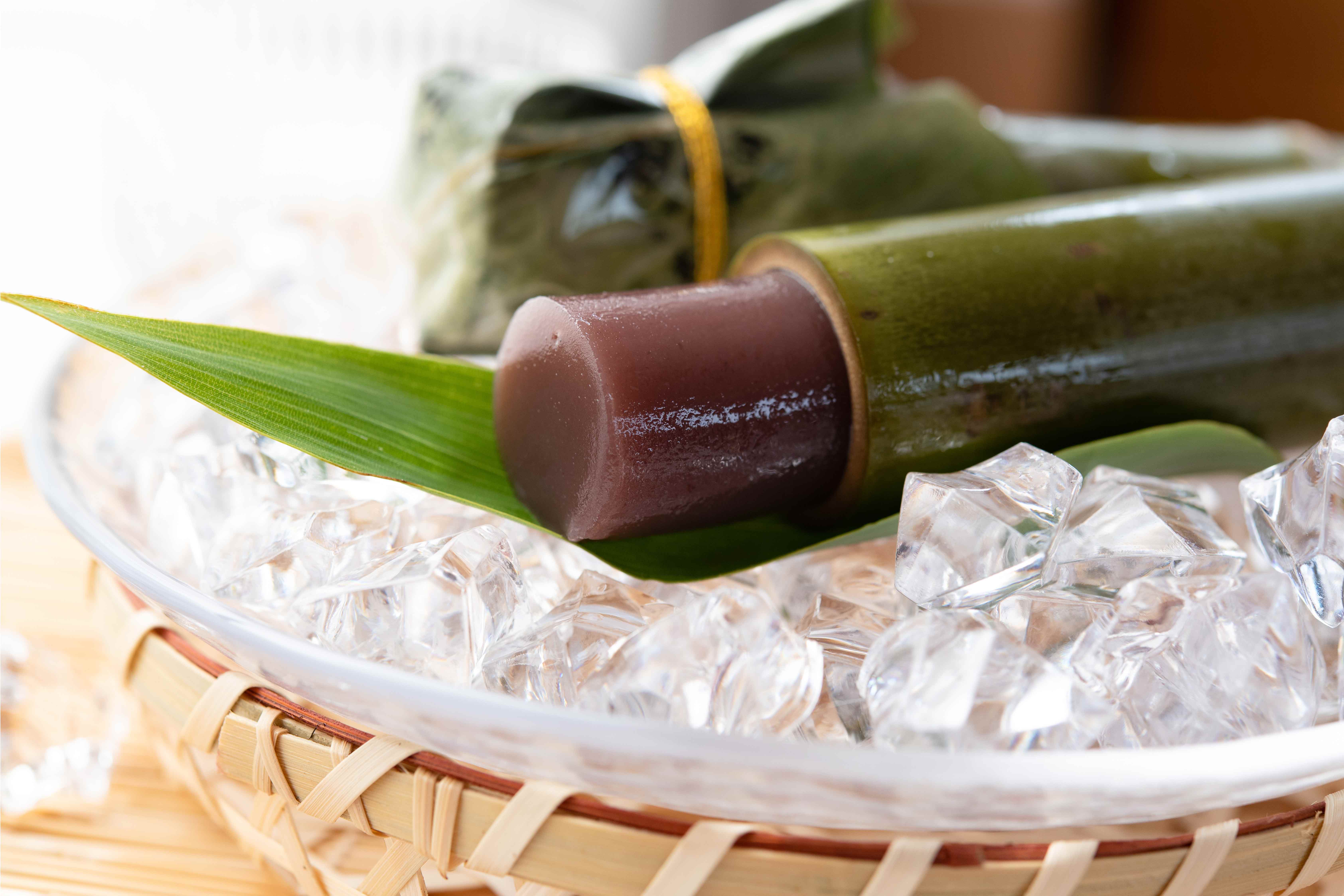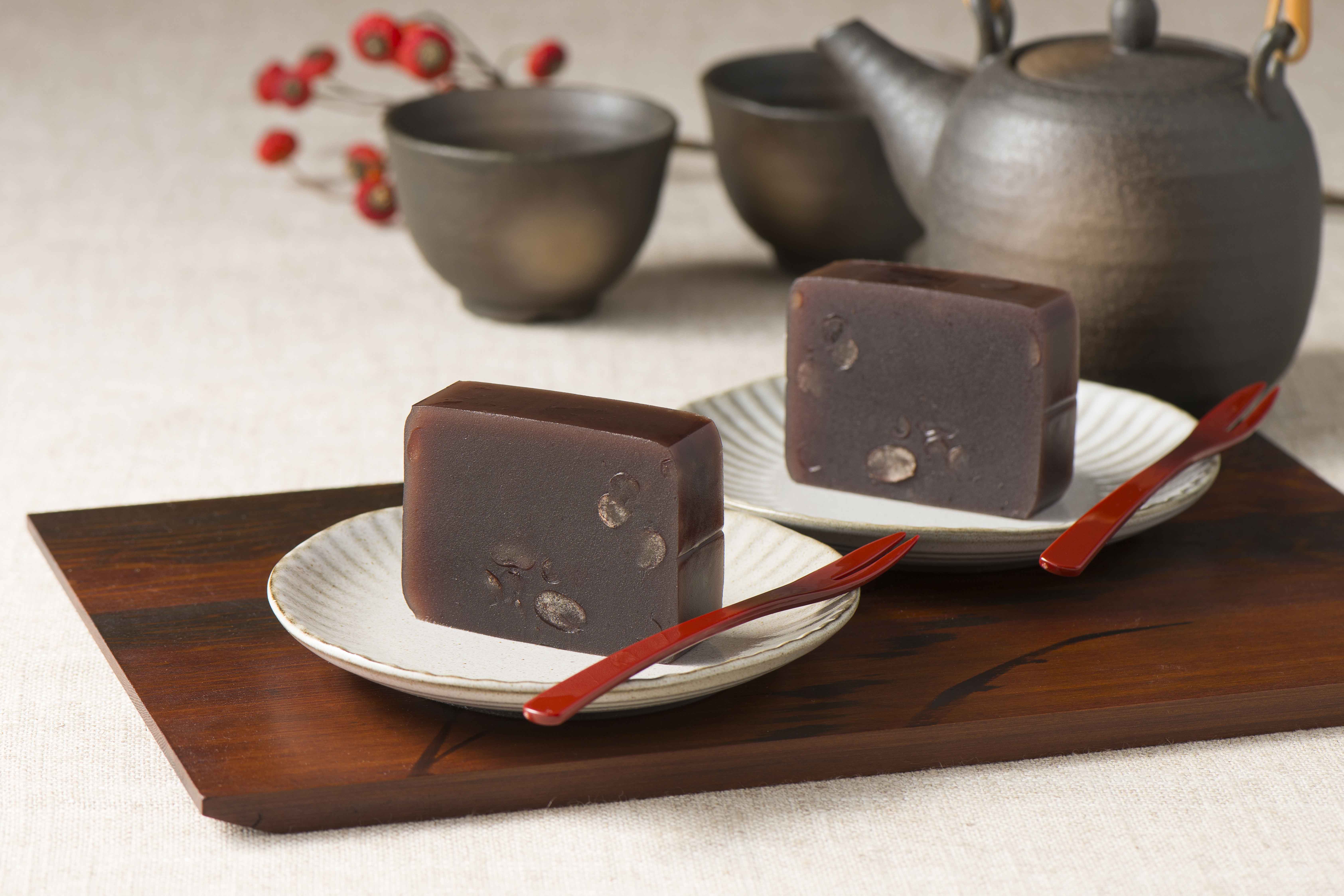There are many kinds of Wa-sweets that are very delicate and beautiful in appearance. Since they are sweets, it is only to be expected that the taste and flavor of them will be modified by the ingredients and cooking methods used. What makes Wa-sweets even more unique is that many of them have a seasonal feel to them. It would be more appropriate to say that they are focusing on how to express some kind of emotions or atmosphere. Some of them are designed in the motif of seasonal scenery or events that are unique to Japan… “Mizu-Yokan” is one of the most typical examples. Note that “Yokan”, which generally contains a lot of “Kanten (agar)”, is called “Mizu-Yokan”.
Now, we’d like to talk about “Yokan” in this article. “Yokan” is a kind of sweet made by pouring An-paste (azuki beans, green tea, chestnuts, sweet potatoes, etc.), which was introduced in the article on “Anko (An-paste)”, into a mold and hardening it. Generally speaking, “yokan” is made by hardening these “An-paste” with Kanten-agar, flour, or kudzu powder. It is said that this dish (cooking method) was brought from China. It’s a kind of “Nikogori (stew jerry)” made by letting the gelatinous material in mutton soup cool and harden. In the Middle Ages (12th-15th centuries), this cooking method was introduced to Japan in the “Shojin cuisine” of Zen Buddhism. As a result, they came up with the idea of using red beans and other legumes instead of meat or seafood, which led to the creation of the current “Yokan”. In the beginning, the cooking method was to solidify the An-paste by steaming. In the Edo period, In the Edo period (1603-1868), a cooking method of mixing Kanten-agar and other ingredients into An-paste to make it cool and harden was invented, and “Yokan” became one of the most popular Wa-sweets. Many of Japan’s long-established stores or famous yokan sweets were created around this time. It is said that quite a few of the cooking methods and skills were almost perfected at that time. Isn’t it amazing that these methods or skills have been passed down to the present day?
This “Yokan” has a very high sugar content, so it can be stored at room temperature for a long time. It is also high in calories in small amounts and has a very high energy conversion efficiency. Therefore, recently it is also attracting more attention as an emergency food or a calorie supplement for sports. It is very interesting that traditional food culture can be developed and used in various ways to meet the demand of the times.
Kanten

“Kanten” is essential ingredient for making Japanese “Mizu-Gashi”, such as “Mizu-Yokan”. Sweets that contain a lot of water, such as those made with Kanten-agar, are called “Mizu-Gashi” in Japanese. Jellies are also kind of “Mizu-Gashi”. “Kanten” is made by heating seaweeds such as Tengusa and Ogonori, and then freezing and drying the extracted sticky substance. It is dissolved in boiling water when used in cooking. As a matter of fact, dishes using this “Kanten” have been eaten in Japan for a long time. One of the traditional Japanese dishes is called “Tokoroten”. Depending on the seasoning, it can be considered a sweet. There is a record of it being eaten in the 700’s, long before the cooking method of “Yokan” was introduced from the continent!! So, why didn’t the cooking method with using this “Kanten” become popular earlier? You must be wondering, right? Well, it’s for one simple reason. “Kanten” dishes were difficult to preserve in a fresh state. It was in the early Edo period that a method of preserving them by freezing and drying them into dried Kanten-agar was finally devised. Until then, it was only a food for raw consumption. As a result of the development of the long-term preservation way of dried Kanten-agar, the Japanese “Kanten” was eventually widely spread overseas. However, it seems that the demand was greater for medical research applications such as bacteria than for foodstuffs. So it was very suitable for use as a culture medium for cultivating bacteria and other organisms. And now… In addition to being able to chill and solidify the juices of some fruits that cannot be solidified with gelatin, it has also become very popular as a healthy food or diet food due to the abundance of dietary fiber it contains and its ability to inhibit the absorption of fat and sugar. It’s interesting to trace the history of any food or cooking method, isn’t it?




